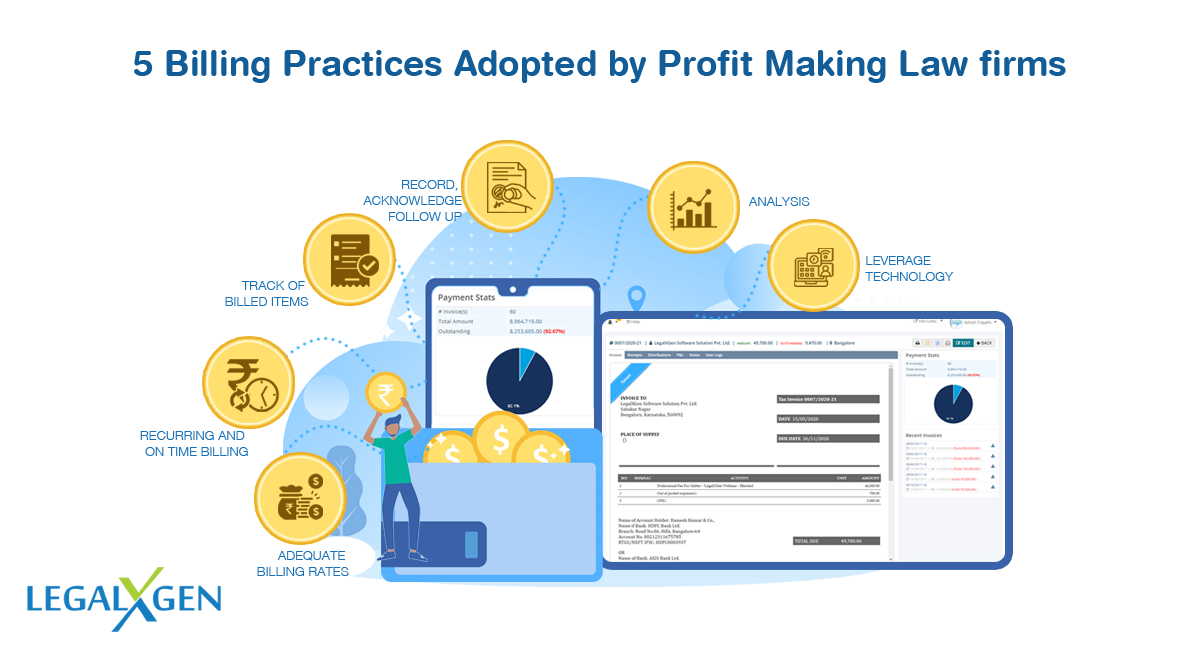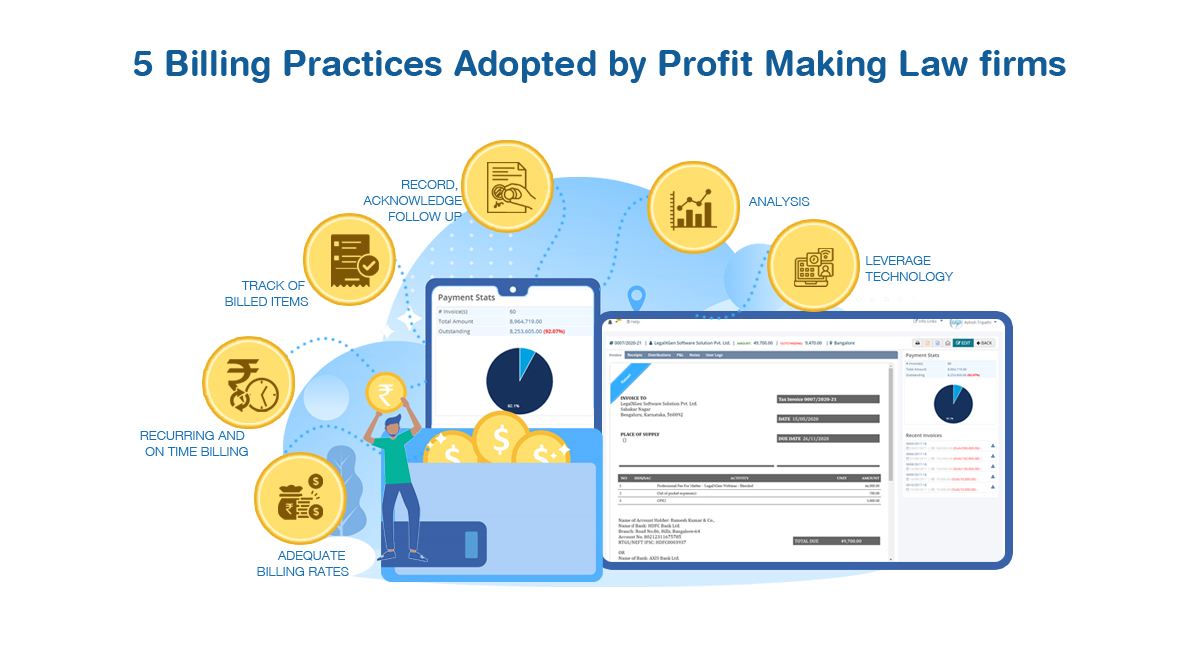
Money coming in is the fuel to run not only the law firms but any business. Correct billing practice does not only ensure your firm to be more profitable but also helps to have happy customers. And it’s your happy customers who make you a successful and profit-making law firm.

Billing is one of the most essential aspects of any law firm. In fact, poor billing practice is one of the most common practices of loss-making law firms.
Following are the 5 practices you may adopt at your law firm to bill accurately, become more profitable, and ensure no revenue leakage:
- Correct Billing Type and Rates
Considering the engagement, customer’s need, and convenience correct billing type and price need to be offered.
Fixed Fee, Person Hourly Rate, Consolidated Rate, Retainership, and Task/ Activity Based are some of the common billing types law firms use. We’ll covert various billing types in a separate post.
While quoting any the price you need to consider your infrastructure charges, cost of the team involved, any additional expenses, and then you should apply your margins. Make sure you’re not undercharging or overcharging your client; you know the consequences of both.
- Recurring and on Time Billing
Matter centric approach is the most ideal billing for law firms.
Segregate between one-time and recurring engagements.
One-time engagement needs to be billed as and when the task is over. For recurring engagements, you need to decide on a billing cycle. You may decide either the last week of the month or the first week of the month.
Ensure you have a unique invoice no and you mention the due dates on all the bills. Bills need to be shared by email and post (if the client really needs this).
- Keep a Track on Billed and Un Billed Items
You need to have a track of the following items:
-
- Time, which you’re supposed to bill. It’s a must for the hourly rate matters.
- Expense, which you incurred on behalf of your clients.
- Matter, either a fixed fee or hourly rate you need to have a track if you billed it or not.
Above are the three most important aspects of your billing ensure you mark these items that it’s billed or not.
- Record, Acknowledge & Follow up
-
- You need to organize your invoices in such a way that it’s searchable by FY, client, matter, and date.
- Whenever you’re receiving any payments make sure it’s recorded, and an acknowledgment is sent to the client, and the concern partner/team is updated about it.
- As per your firm’s policy decide a cut-off for the bill payments i.e. 7-10-15 days after the due date. On an everyday basis need to identify and follow-up on the bills which are not paid.
- Leverage the Technology
The right technology could be the solution for all the above points along with many other benefits such as:
-
- Quick and Accurate Billing
- Payments and outstanding on fingertips
- Track the billed and unbilled items
- Analysis: Know your profitable and non-profitable assignments and try to make them profitable.
The manual billing process has many drawbacks such as:
-
- People dependent
- Lack of Analysis
- Lose track of billed and unbilled items
- Delay in follow up
We hope you find it hopeful to make your firm more profitable.

Ashish has 15+ years of experience in Enterprise Applications.
A Technology, Process & Productivity Expert for the law firms from last one decade.
 English
English French
French German
German